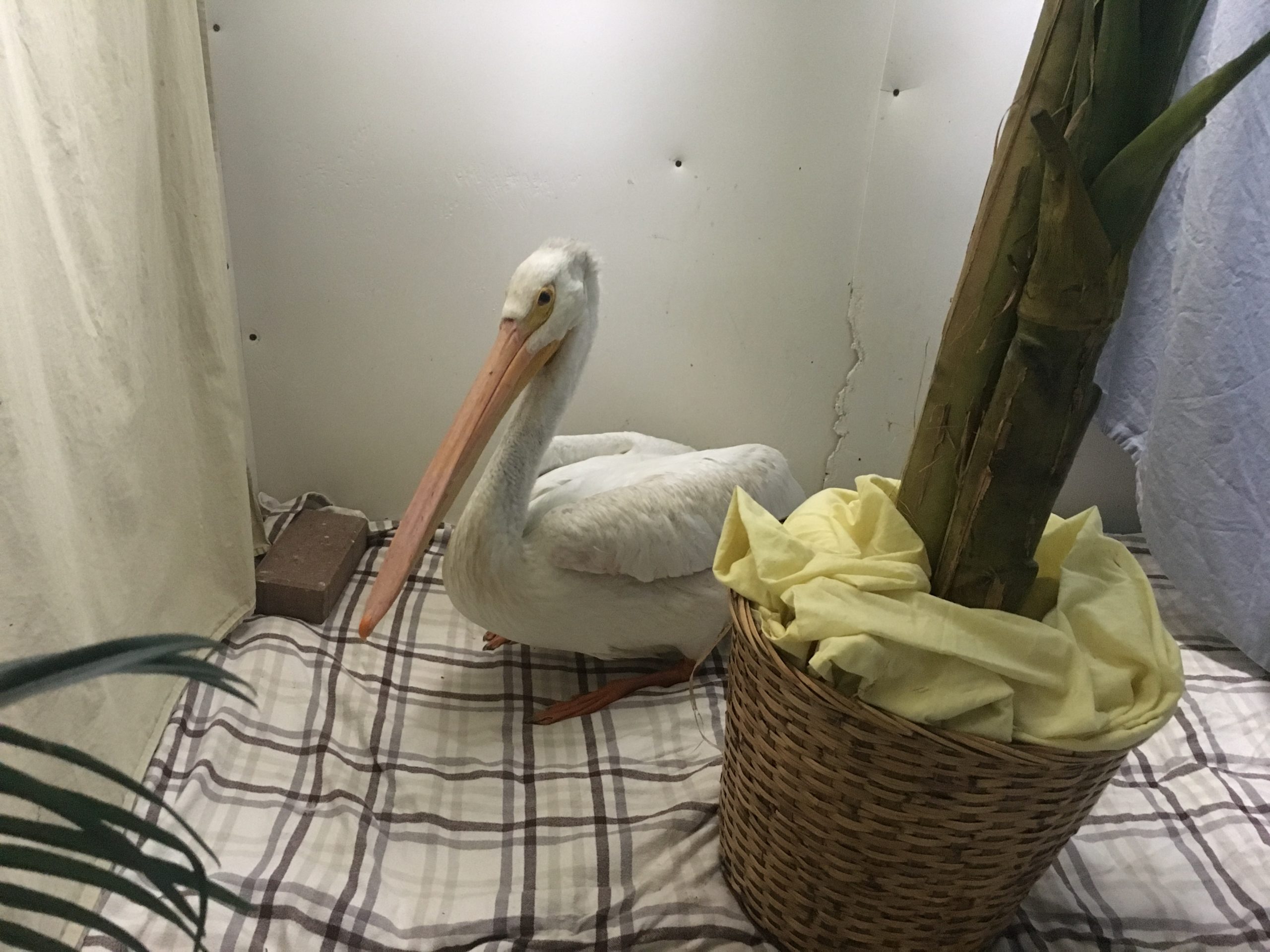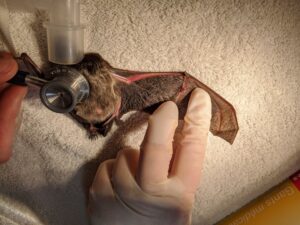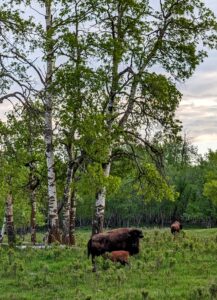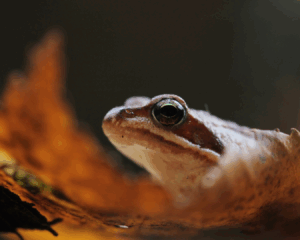In light of AIWC’s recent pelican patient, it became clear to me that many people don’t realize we have pelicans in Alberta. That’s totally ok, because not everyone lives and breathes wildlife (AIWC staff and volunteers, I’m talking about you!) This blog is going to give you information about pelicans, hopefully more than you knew before reading it.
Pelicans belong to the Pelecanidae family, and there are a total of eight different pelican species throughout the world. These water-loving birds can be found inland and along coastlines. The different species range in colour from white to grey to brown to black.
The species found in Alberta is the American white pelican (Pelecanus erythrorhynchos). Other than size difference, female and male American white pelicans have the same appearance – orange bills and legs, white feathers on the body, and black posterior feathers at the tip of the wings that can be seen in their silhouette while flying, but are difficult to see when on water or ground.
Mostly everyone knows what a pelican is because of their unique bill. Their bills are very large, with a flat top and a large throat sac on the bottom. Pelicans do not store food in their beaks!
During breeding season, the bill, iris, bare skin around the eyes, and the feet become a more brilliant orange to impress the mate. An interesting fact about the bill of this particular pelican species is the upper bill grows a laterally flattened 3 inch horn (otherwise known as a caruncle) about 1/3 the length of the bill from the tip of the bill. The horn is the shape of half a circle, both males and females grow them, and it is believed to be sexual ornamentation to aid in helping get the best mate. After mating season is over, the horn is shed and the orange colours become increasingly dull. No other species of pelican grows this horn!
Other pelican species dive to catch fish, but these pelicans catch food from the surface of water while swimming. Pelicans eat more than 4 lbs of fish per day. That’s the equivalent of 20-35% of their body weight (the average weight of a pelican ranges between 11 to 20 lbs).
These birds are believed to be social birds, and nest on river islands in colonies with several hundred pairs – often up to 5,000 birds. Like several other bird species, these pelicans mate for life (their lifespan in the wild is over 17 years!).
American white pelicans are found in Alberta during their mating season, which usually ranges from March or April until September or October. They migrate south to the Pacific and the Gulf of Mexico Coasts, and tend to live in estuaries, lakes, and rivers. This species tend to avoid the open seashore and open ocean, and fly over land during their migration.
The American white pelican is globally listed as a species of least concern. However, conflicts with humans still occur. The most common anthropogenic issues with American white pelicans include, but are not limited to, habitat loss, fishing gear incidents, boating disturbances, and poaching,
Remember, if you see injured wildlife, call AIWC for help or advice at 403-946-2361.
By Tayler Hamilton, AIWC Volunteer.
Sources:
https://www.allaboutbirds.org/guide/American_White_Pelican/id
https://en.wikipedia.org/wiki/Pelican
https://www.arkive.org/american-white-pelican/pelecanus-erythrorhynchos/







32 thoughts on “Pelicans”
We have a home in Florida as well as Calgary. We’ve seen and admired the white pelican fo years. When we’re down south we see the brown pelican everywhere. But on our last trip there we encountered many white Pelicans in specific areas. To my knowledge the two species never group together. Is this true? They are our favorite wild bird and will always entertain us.
Hello,
Thank you for your question. Typically they do not group together, but white pelicans can be found on both coasts and are often spotted in Florida. It’s great you get to see them! 🙂
Just happened across a colony of several thousand today. What a surprise to see theses majestic birds. So many of them as we paddled about the islands they were nesting on. Just more and more as we circled the islands. Fledglings running about. Calmed down as they realised were weren’t going on the islands. Nor should anyone.
Wow, that is awesome! Thanks so much for sharing.
– AIWC Staff.
We have just today seen 1 near Sherwood park! Fascinating!!!!
I just saw a white pelican at Four Seasons Park in Beaumont. He was alone, but I wonder if there was another one on a nest on the island of the lake.
So cool to see one here.
They are very cool birds, so great you got to see one in the wild! 🙂
There’s about a dozen of them at Dodd’s Lake (North side of Innisfail, Ab). I’m told that there are no fish in this lake, can their diet solely consist of frogs or are they going elsewhere to feed?
Hi, most likely they are going elsewhere to feed 🙂
looked like a pair just south of the Penhold bridge last Sat . Aug3/19 . they seemed to be staying in the same area ? small ones nearby
That’s great news!
A lone White Pelican has been on the Simpson reservoir in the Grand Valley for several weeks now.
Does he look to be injured? If so, please call out Wildlife Hotline at 403-946-2361. Thank you so much!
I’ve been watching the pelicans in sherwood park and Edmonton for years. Why do we never see the babies as we do the geese etc?
Normally they choose very isolated lakes to nest in colonies, so it would be rare to see them nesting in/around Edmonton.
They are over populated in Alberta is there anything done to control the species.. They are overtaking our trout lakes in places where they were not there before.
I am born and raised Albertan, in the Edmonton area. As a child, we camped alot, going into some remote areas. I remember seeing one or two pelicans during those times. My father always points out wildlife where he finds them. I recently found two groups of pelicans in Dansereau Meadows in Beaumont. Will they get along with two couples of Canada Geese with goslings in the same area?
Hi Donna, they have different dietary needs so there shouldn’t be much competition between them 🙂
Just graced with a close fly-by of 4 pelicans less than 1/2 a block from my 4th level unit. Flying about 20 feet above. Wonderful to see them so close, tilting & turning, in unison with the leader .
Very cool, thanks for sharing!
I grew up in Alberta and considered myself fairly aware of the local wildlife, but I had never seen nor heard of pelicans in the province. Any estimate as to how long they’ve been frequenting the region? Is this something relatively new, perhaps climate-change related?
Hi Warren,
American White Pelicans can be found in various spots around the province, some sources report them being here since at least the 1970s but there’s not much info to be found on them.
There are 3 enjoying Castlewood Lake in Edmonton right now. We have lived here over 15 years and saw 6 of them for the first time on June 17, 2016. I wonder what they are eating as they gracefully dip in and out of the water simultaneously? I did not think we had any fish left after the cormorants paid a visit last year. So peaceful to watch. Thank you for the information!
There are 3 enjoying Castlewood Lake in Edmonton right now. We have lived here over 15 years and saw 6 of them for the first time on June 17, 2016. I wonder what they are eating as they gracefully dip in and out of the water simultaneously? I did not think we had any fish left after the cormorants paid a visit last year. So peaceful to watch. Thank you for the information!
Hi Monica, their diet does consist mainly of fish but they will eat other things such as insects and amphibians, so it could be that they are eating those items too 🙂
We have had around 20 white pelicans at our small lake west of Bentley for more than two weeks. They stay mostly on our 2m x 2m diving platform anchored in a bay. We have no proof of fish in this water but the pelicans do not seem to leave the area. What could they be eating?
Hi Myles, their diet consists mainly of fish but they will eat other things such as insects, amphibians etc. It could be that they leave for short periods of time to feed elsewhere and then return.
My grandson and I were fortunate to see 4 pelicans in pigeon lake last month! How many pelicans Do you estimate come to Alberta each year?
Thanks
Hi Peggy, that’s great you were able to see some pelicans! Unfortunately we do not have numbers on how many come to Alberta each year.
Last summer I counted about 30-39 average on a lake in leduc.. We should start a count for them .. it might help keep track of their growth and migration etc.. we could just add the count and location here somewhere ? what do you guys think?
Just saw one yesterday in Blackfalds! I had no idea they existed here in Alberta! I was out riding my horse and looked at a pond/slough in someone’s field and there it was. I carried on riding and next thing it was flying parallel to me. Big wing span!
Wonderful views on that!